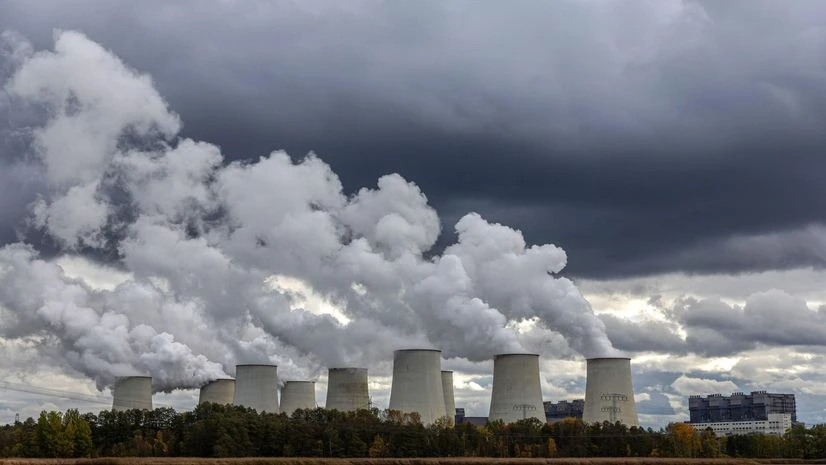Senior finance and central bank officials from Southeast Asia and major economies met Thursday in the scenic Laotian city of Luang Prabang to discuss ways to help the region build resilience against shocks like the COVID-19 pandemic and natural disasters brought on by climate change.
The need for faster progress was dramatically apparent as the city and surrounding region were engulfed in heavy smoke from fires some set to clear forests for crops, some ignited by record high temperatures and tinder-dry conditions. The air quality index early Thursday was nearly 300, or very unhealthy.
Laos and other countries in Southeast Asia have committed to seeking more sustainable ways to feed their people and power their economies. The question is where the money will come from to do that.
Green finance is among several items on the agenda of the finance meetings of the Association of Southeast Asian Nations related to countering the mounting impacts of global warming. The officials also were set for talks on an ASEAN infrastructure fund and disaster risk financing and insurance, according to the agenda provided by hosts of this week's meetings.
Also on the list, refining a taxonomy to help identify and agree on projects that support ASEAN's sustainability agenda and align with its climate change commitments and other goals.
The 10 member nations of ASEAN Brunei, Cambodia, Indonesia, Laos, Malaysia, Myanmar, Philippines, Singapore, Thailand and Vietnam range from tiny but wealthy Brunei and Singapore to big, fast growing economies like Vietnam and Indonesia. They have pledged to cut carbon emissions to help reduce the impact of climate change but are struggling to find ways to unlock financing needed to make that transition.
ASEAN members are extremely vulnerable to extreme weather, drought and rising sea levels. Investments in clean energy need to increase by five to seven times, to more than $200 billion a year, according to various estimates. Laos and its neighbors also are contending with a raft of other regional troubles, including human trafficking, a growing illicit drug trade and fast-growing enclaves of online scam centers run by criminal syndicates.
More From This Section
A landlocked country of about 7.5 million people, Laos is rich in hydroelectric power, but its economy has been shrinking in recent years and its national finances are fraught strained by a heavy load of foreign and domestic debt, a weakening currency and inflation.
Longstanding traditions and a lack of funding to persuade farmers not to rely on crop burning their most affordable option mean that progress is slow. The government has set a goal of reducing the number of fires by 35% by the end of 2025. Similar burning in neighboring Thailand, Myanmar and Cambodia leaves the region shrouded in heavy smog for weeks at a time during the spring.
Countries in the region have begun to build regional electricity grids as one step toward improving a balance between supply and demand.
A higher priority for Laos, a Communist state where annual incomes average below $2,000 a person, is weaving itself into the wider regional economy of about 660 million people. Combined, the region is the world's fifth-largest economy at about $3.3 trillion.
Like many countries in the region, Laos' economy has become increasingly entwined with that of China. Those ties have deepened with the building of a $6 billion high-speed railway that links to railways in southwest China's Yunnan province and eventually will be connected with a line running to Bangkok and the Gulf of Thailand. The downside: debts that are a heavy drain on the country's resources.
Along with regional financial leaders, senior officials of major international financial institutions like the International Monetary Fund and Asian Development Bank, along with delegates from Japan, China, the U.S. and other major economies, are attending the talks in Luang Prabang.
U.S. Treasury Secretary Janet Yellen is not attending the talks, but traveling to China this week, where she will meet with American business leaders and Chinese officials in south China's Guangzhou and in Beijing.
Also in Beijing this week were Indonesia's President-elect Prabowo Subianto and the foreign ministers of Vietnam, Laos and East-Timor, which is aspiring to become an ASEAN member. The flurry of visits highlights rivalries for influence in the region.
(Only the headline and picture of this report may have been reworked by the Business Standard staff; the rest of the content is auto-generated from a syndicated feed.)

)
